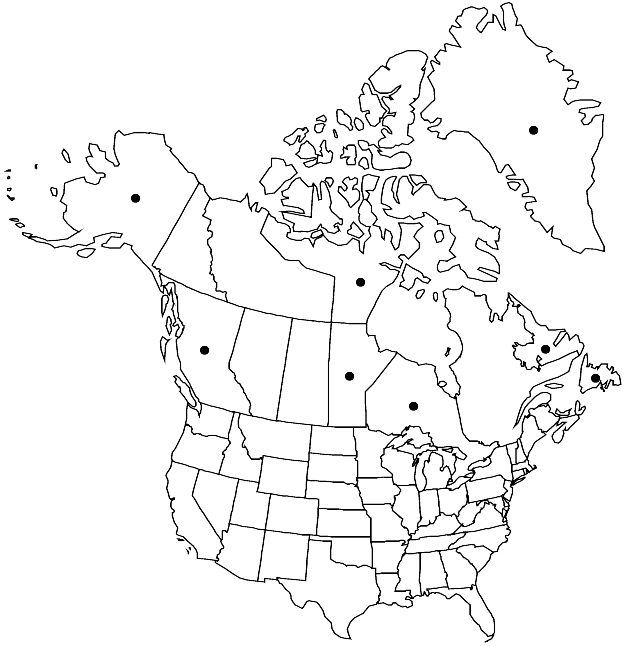Hygrohypnum alpestre
Verh. Bot. Vereins Prov. Brandenburg 46: 198. 1905.
Plants soft, yellow or yellow-green, with or without rusty mottling distally, older extremities dirty or reddish brown to reddish black. Stems to 9 cm, leafy throughout, often denuded basally, irregularly branched; hyalodermis absent, epidermal cells small, walls thick, similar to subadjacent cortical cells, central stand strong. Leaves usually tumid-julaceous, sometimes spreading, straight, never falcate, usually little changed when dry or moist, oblong to oblong-lanceolate, deeply concave, almost boat-shaped in apex, (0.9–)1.4–1.6(–1.9) × (0.4–)0.6–0.7(–0.9) mm; margins narrowly recurved especially in distal 1/3 and apex, entire to uneven in apex; apex acute to slightly obtuse, becoming reflexed as squarrose apiculus; costa double and long with one arm reaching mid leaf, single to mid leaf or beyond, or double and short; alar cells quadrate, short-rectangular, or rectangular, region clearly differentiated; basal laminal cells shorter, wider, walls more incrassate; medial cells uniformly long linear-flexuose, (55–)65–90(–105) µm; apical cells usually shorter; marginal cells rarely longer than 55 µm. Sexual condition autoicous; perichaetial inner leaves lanceolate to linear-lanceolate, plicate, margins entire or sometimes toothed toward apex, ecostate, costa single, or double, slender, to mid leaf. Seta reddish, 0.7–1.6 cm. Capsule with endostome cilia (2 or) 3.
Habitat: Irrigated, emergent acidic rock in montane and northern streams
Elevation: moderate elevations (700-1400 m)
Distribution

Greenland, B.C., Man., Nfld. and Labr., Nunavut, Ont., Alaska, Europe (Russia, Scandinavia).
Discussion
Hygrohypnum alpestre is most easily recognized by the narrowly recurved, squarrose leaf apiculus, best seen in stem and branch apices. Also distinctive is the depth of the leaf concavity, with the apex like that of boat bow. The same concavity gives the leaves a tumid-julaceous appearance on the stems or branches. Also, the alar region of quadrate, short-rectangular to rectangular cells is well developed. The plants grow in easily fragmenting patches. The leaves are usually closely spaced with enlarged, often excavated, thick-walled alar cells and slightly lengthened laminal cells in the acute apices; older leaves may be eroded at the apex.
Selected References
None.